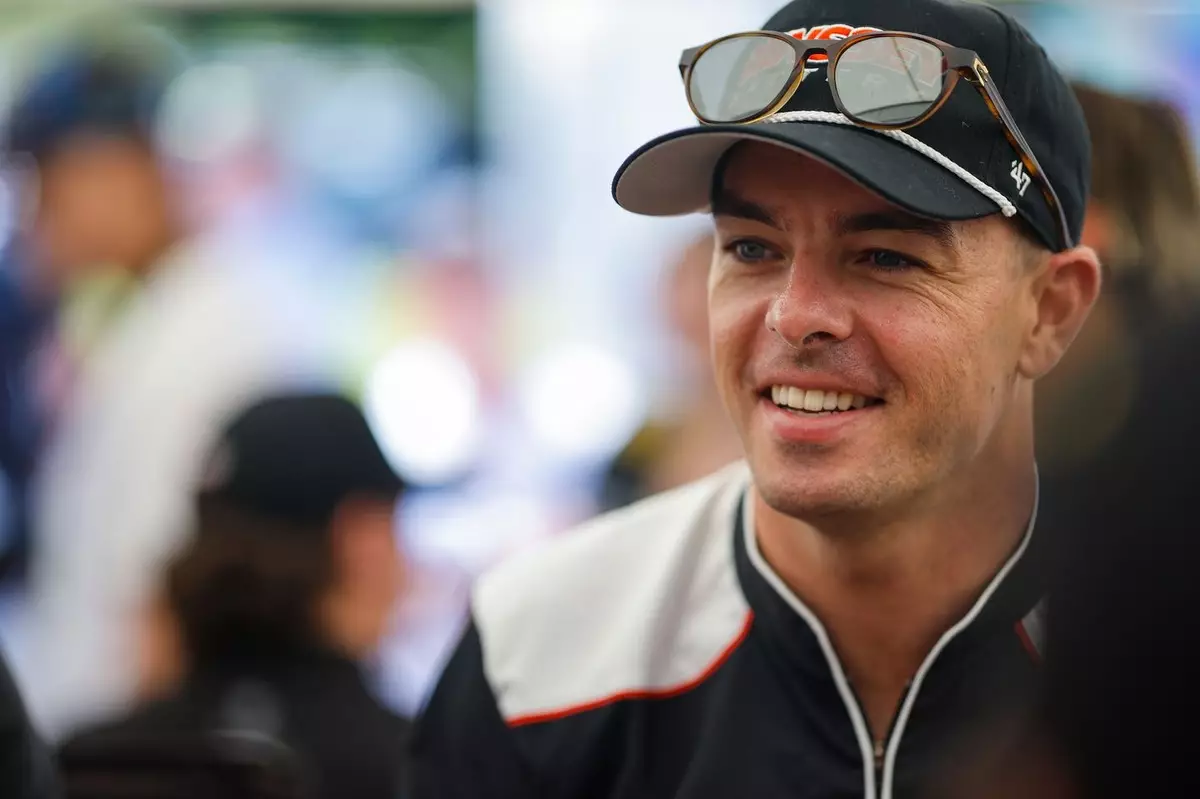Scott McLaughlin, renowned for his dominance in the IndyCar Series with Team Penske, is embarking on a remarkable journey that diverges from his usual realm of high-speed single-seaters. The New Zealander, famed for his fierce competitiveness and relentless pursuit of excellence on oval and road courses, is now venturing into the world of GT racing—and doing so at one of motorsport’s most revered circuits: Suzuka. For McLaughlin, this isn’t merely a race; it’s a meticulously crafted milestone—a “bucket list” dream that resonates deeply with his passion for diverse motorsport experiences.
By stepping into a Chevrolet Corvette Z06 GT3.R with the Malaysian Johore Motorsports Racing team (JMR), McLaughlin is tilting at the windmill of his own aspirations, crossing the chasm from single-seaters to endurance sports car racing. This move underscores his genuine enthusiasm for varied racing disciplines and his adventurous spirit to embrace challenges outside his comfort zone. His participation at Suzuka symbolizes more than a technical switch; it is an affirmation of his thirst for challenges that transcend traditional racing boundaries.
Redefining the Racing Persona: Broadening Horizons
While McLaughlin’s name is synonymous with the high-octane world of IndyCar, his history suggests a versatile racing pedigree that often flies under the radar. His experience spans IMSA sports cars, including a notable victory at the Bathurst 12 Hours in 2016 and a spectacular performance at Sebring 12 Hours in 2023, where he showcased his ability to adapt and conquer different race formats. This diversification highlights the evolution of his career—a desire not just for medals but for holistic racing mastery.
His engagement with the Corvette Z06 GT3.R reflects an intentional shift, perhaps driven by a desire to deepen his understanding of endurance racing and physical car handling. The move is strategic, allowing him to hone skills that are increasingly valuable in an era where drivers are expected to excel across multiple disciplines. Moreover, behind this transition lies an underlying assertion: that the most successful racers are those unafraid to diversify and test their limits across varying formats.
Collaboration and Camaraderie: The Spirit of Competition
What makes McLaughlin’s entry into the Suzuka endurance event even more compelling is the collaborative spirit he translates from his familiar environments. Partnered with Chevrolet factory drivers Alexander Sims and Nicky Catsburg, McLaughlin is embedded within a team that boasts established expertise in GT racing. Their camaraderie exemplifies a core pillar of endurance racing—teamwork—yet it also reflects McLaughlin’s readiness to learn from seasoned specialists.
His designation as a “GM friend” indicates a sincere bond with the manufacturer and an appreciation for the collaborative effort involved in such complex racing endeavors. This willingness to step into a different environment, learn from accomplished peers, and contribute to a shared goal encapsulates an evolving driver identity—more than a competitor, he becomes a student of motorsport, eager to absorb knowledge and grow.
The Cultural and Historic Significance of Suzuka
Suzuka Circuit’s rich history as a battleground of legends makes McLaughlin’s participation inherently meaningful. The track, renowned worldwide for its technical complexity and thrilling layout, has long been regarded as a proving ground for drivers seeking to demonstrate their true mettle. For a driver predominantly associated with American-style open-wheel racing, stepping onto Suzuka’s challenging bends and high-speed straights is a profound statement of intent—one that signals a desire to diversify and demonstrate adaptability on one of the sport’s most revered stages.
Its return to the traditional 1000km endurance format after a hiatus since 2019 emphasizes the event’s significance. For McLaughlin, competing in a race that has historically tested drivers’ stamina and skill adds a layer of prestige to his endeavor, elevating his personal milestone into a symbol of global motorsport engagement. His participation not only signifies a personal achievement but also underscores the importance of Suzuka as a platform where talents from varied disciplines can showcase their versatility.
The Expanding Landscape of GT Racing: A Catalyst for Change
The entry list for Suzuka’s Intercontinental GT Challenge illustrates an eclectic mix of globally renowned manufacturers and drivers. The resurrection of iconic liveries, like Porsche’s historic “pink pig,” signals a reverence for motorsport traditions while embracing contemporary competition. McLaughlin’s venture into this crowd represents a broader trend—drivers crossing disciplines, manufacturers pushing boundaries, and fans witnessing an exciting convergence of racing worlds.
This convergence fuels a narrative that motorsport is evolving beyond rigid categories. For McLaughlin, embracing GT racing at Suzuka isn’t merely a side project; it’s a strategic positioning to elevate his profile and gain comprehensive racing credentials. It’s also an inspiring testament to the increasing permeability of racing disciplines, where a singular focus is replaced by an integrated pursuit of excellence across formats.
In the end, McLaughlin’s leap into the world of endurance GT racing at Suzuka serves as a clarion call to aspiring drivers: true greatness lies in continuous exploration. His journey reflects not just a personal dream fulfilled but champions the spirit of motorsport’s infinite possibilities.

